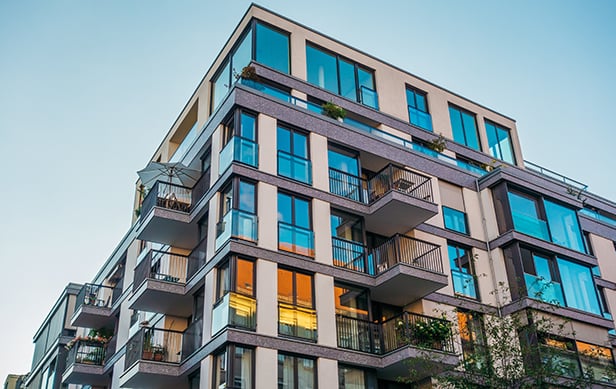GlobeSt.com: The news story we ran focused on the merchandise mart deal with a Chinese investment group. How did that develop?
Molnar: That was done more directly through the City of New Orleans, although we did host the group when they had their annual shareholders meeting in New Orleans in November. We made some contacts and gave them the lay of the land, so we hope we laid the groundwork for their ultimate commitment to invest in the market.
GlobeSt.com: And to the extent that you can speak for them, what is it that they are looking to accomplish?
Molnar: They're looking to set up a merchandise market focused on Chinese products. They clearly see the opportunity for continued construction and growth--particularly in the housing market. So I think they're hoping to come in and sell different products to homebuilders. Based on the numbers I've seen after the storm, there are some 120,000 housing units that need to be either repaired or replaced and somewhere around 80,000 apartment units, so there's significant demand to say the least. What's also driving that is the shifting marketplace as folks consider relocating. You're seeing some company relocation, which long-term will influence where folks build homes.
GlobeSt.com: I'm surprised that, almost a year and a half after the hurricane, relocation decisions are still part of the mix. I would have thought that was all over months ago.
Molnar: True, but the issue we've had is the delay in getting federal monies allocated. Because of the sheer scale of the Road Home program [a state program designed to help Louisiana residents get back into their homes. It is said to be the largest single housing-recovery program in US history.-ed], it is not being implemented at the pace that some people would expect or hope. Also, the City of New Orleans has gone through a pretty detailed recovery-planning process that's only now being officially unveiled, so a lot of questions about which neighborhoods will return have taken longer to answer.
GlobeSt.com: How would you characterize the city's overall progress?
Molnar: New Orleans is a tale of two cities--the area that was affected more heavily by the hurricane, and those parts of the community that were not as heavily impacted. Our office has identified some 85 projects--probably around $20 billion total--that are on the drawing board. They run the gamut from residential and condo development to general wide-scale investment. We've seen quite a bit of interest in things like bio-diesel facilities, refinery expansions and film facilities.
GlobeSt.com: What about the foreign component?
Molnar: The state is tracking 12 different modular-home projects, one is a South Korean firm that intends to build a facility here. They plan to do modular housing and all the stock that goes into it on a campus setting. Then there was the Chinese investment, and another group that has announced a similar plan. The Wolsey Group, a firm from Great Britain, first came in with warehouse and distribution facility and is thinking about developing a manufacturing facility as well. We've got more than $20 billion in investment looking at this market, and there is a significant part of that is foreign.
GlobeSt.com: Why?
Molnar: New Orleans is a known commodity on the international stage. Foreigners know the city by name. The fact that we're a port community as well lends itself naturally to international trade. There has been a project proposed in Plaquemines Parish for an intermodal dock in the river--actually in the water to transfer containers directly from ships to barges to transport them up to the different rail lines that service our market. We've had companies that have manufacturing facilities in China looking at satellite facilities in our market.
GlobeSt.com: Sounds like it's all upside. But what are the challenges?
Molnar: The challenge in the short run is the very thing that's driving the demand--the lack of housing. The other thing is lack of labor. Truth be told, in a metropolitan market of 1.5 million people we've lost a quarter of a million people. There's been a decision by the Housing Authority to not reopen some of the housing facilities but redevelop those properties into mixed-income areas. So the availability of affordable housing, particularly, is very tight right now. A lot of the companies we work with have expressed interest in bringing in a work force to get their project started and then transfer those positions to US workers in a six- or 12-month time frame. I'm working with one group in the modular housing market--it's actually a US firm importing technology from China--that would like to bring workers in from China to get the project started. They're in the process of buying a hotel property, and they've proposed using that to house their temporary work force. Ultimately, when the facility is up and running they would convert that hotel into another use.
The good news is that the Gulf Opportunity Zone tax credits and incentives are going to be extended to 2010, so we have a little more of a window. That was a concern because the slow pace of the initial recovery was hindering a steady flow of cash into the market. Now that this time has been extended, 2007 is going to be a big year in terms of turning some of these proposals into actual facilities.
GlobeSt.com: How actively are you promoting investment, particularly foreign investment?
Molnar: The State Department of Economic Development and the governor's office have been very aggressive about traveling the world and spreading the word about opportunities in Louisiana. The governor visited Japan and China and Kuwait recently, and Mike Olivia, the head of economic development, continues to work around the globe, spreading the message, and we're seeing that effort paying off.
© Touchpoint Markets, All Rights Reserved. Request academic re-use from www.copyright.com. All other uses, submit a request to [email protected]. For more inforrmation visit Asset & Logo Licensing.







